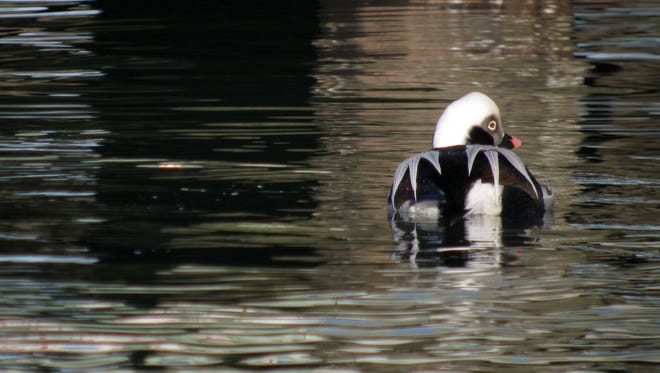Report gives duck hunters hope for a good season
There are three big indicators that waterfowl hunters watch each year to try and determine what sort of hunting season we'll enjoy. The first was the wetland survey, or spring pond counts on the prairies, which were down this year and set an unsure early outlook. The second big indicator, the annual Waterfowl Breeding Population and Habitat Survey, conducted jointly by the U.S. Fish and Wildlife Service and the Canadian Wildlife Service, was released this past week and it tempers that uncertainty with hope on some fronts, concern on others.

Overall it's a mixed bag, with everything dependent upon specific waterfowl species, the habitat they favor and where their prime nesting locations are located. Overall the survey puts the breeding duck population at 48.36 million, just below the mark of 49.52 million from last year. That's still a 38 percent increase over the long term average, so even if dry conditions hampered nesting there should still be plenty of ducks this autumn.
For puddle ducks it was truly a mixed bag. Pintails are the big worry, with numbers down 14 percent from last year and down 34 percent from their long term average. Blue wing teal also showed an annual decline, down 22 percent from last year, but are still up 34 percent from their long term average. Green wing teal, on the other hand, were up 5 percent over last year with numbers a whopping 104 percent above the long term average.
MORE FROM DAVE CIEKOT:
The best hunting season ever is the upcoming one
Futuristic air guns for hunting? DNR weighs in
Could be a tough year for waterfowl hunting on Delmarva
Mallards stayed consistent, up 1 percent from last year and up 51 percent long term. Wigeon showed a nice jump, up 12 percent this year and up 31 percent from their long term average. Shovelers, while down 10 percent from last year, are still up 56 percent from their long term average.
For diving duck hunters things look good for the big three. Redhead counts were up 8 percent over last year and up 82 percent long term. Scaup were up 14 percent from last year and are finally back to exactly their long term average. Canvasback numbers did drop 3 percent from 2015, but are still up 26 percent long term and keep us in the two canvasback per day limit.
Yet the numbers may not tell the whole story. Ducks Unlimited Chief Scientist Scott Yaich says "What's not reflected in the report is that there was fairly significant improvement in habitat conditions after the surveys were completed. In some key production areas, heavy June and July rains greatly improved wetland conditions. This could benefit brood rearing and the success of late nesting species, as well as give a boost to overall production through re-nesting by early nesting species."
As always, the determining factor in our seasons this fall and winter will be the weather, but this good report sets the table for a grand hunting year if the weather cooperates. We'll know more when the next figures, the Fall Flight Index, come out in a few weeks.
Outdoor Calendar
Aug. 18-20: 23rd annual Captain Steve Harman Poor Girl's Open, Bahia Marina, Ocean City, 410-289-7438
Through Aug. 31: Maryland black bear hunt lottery application period
Sept. 1: Opening day of Delaware archery and crossbow deer seasons
Sept. 1: Opening day of Maryland mourning dove season, hunting begins at noon, 15 daily
Sept. 1-15: Maryland early resident Canada goose season, eight per day
Sept. 2-5: 58th annual Labor Day White Marlin Tournament, OC Marlin Club, Ocean City, 410-213-1613
Sept. 3: Opening day of Maryland squirrel season, six daily
Sept. 11: 11th annual Flounder Pounder tournament, Bahia Marina, Ocean City, 410-289-7438.
Sept. 16-20: Maryland early teal season, six daily.
Through Dec. 20: Maryland striped bass season for Chesapeake and tributaries, two fish daily, 20-inch minimum, only one fish over 28 inches